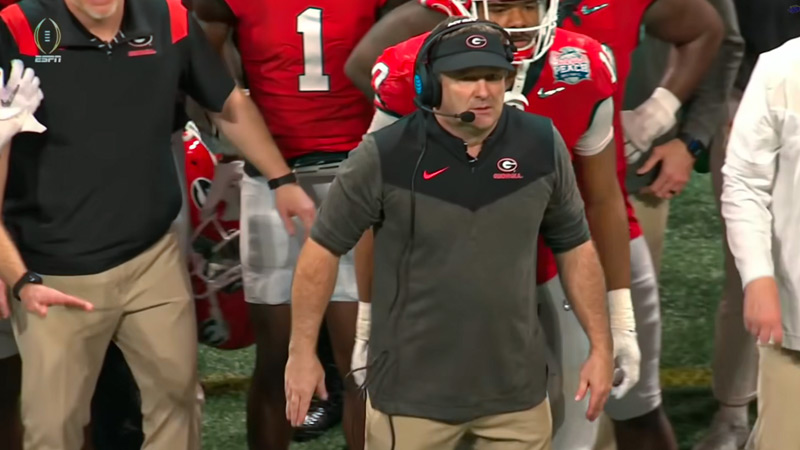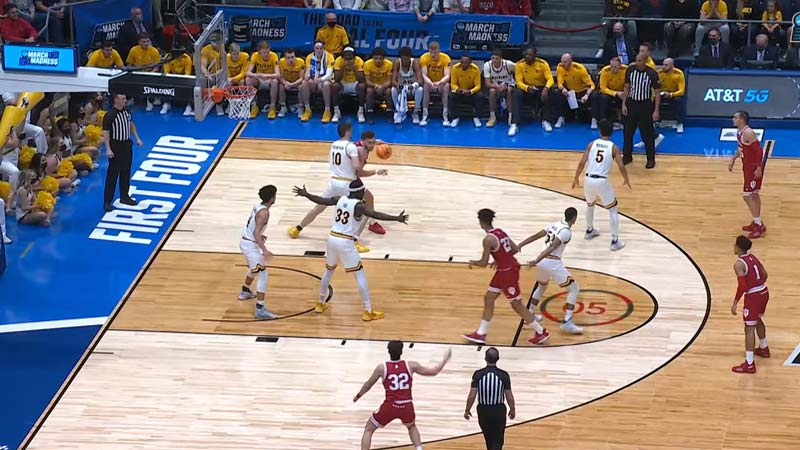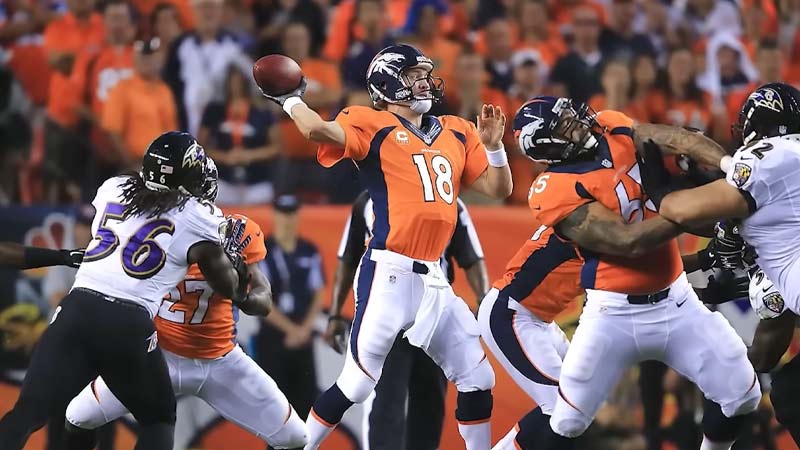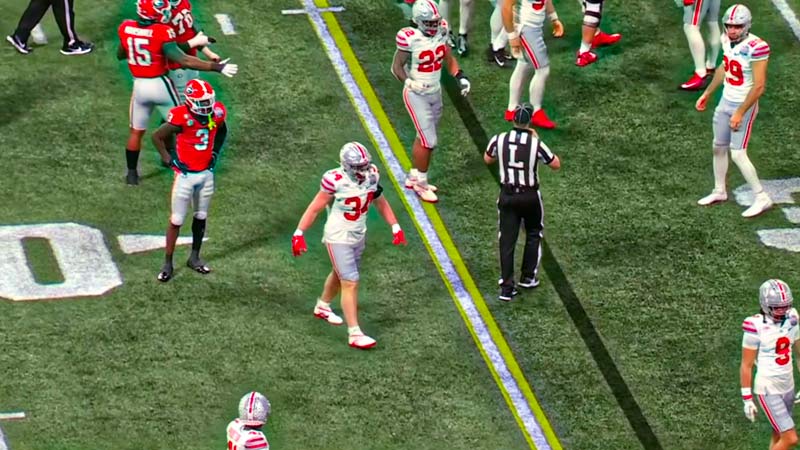In the high-stakes world of American football, every second on the clock can make a difference. Enter the timeout—a strategic pause that allows teams to regroup, plan, and potentially alter the course of the game.
Football timeouts are more than just breaks; they are tactical tools that coaches and players use to their advantage.
In this guide, we delve into the essential rules and frequently asked questions surrounding football timeouts, shedding light on how these crucial moments shape the ebb and flow of the game. So, stay focused till the end.
What Is Timeouts in Football?
In American football, timeouts are brief breaks during a game where a team’s coach can halt play and pause the game clock. Each team is typically allotted a certain number of timeouts per half, usually three. Timeouts serve several purposes: strategic planning, rest, and adjustment.
Coaches use timeouts to discuss game strategies, review plays, and make crucial decisions. Teams also employ timeouts to pause the clock, preserving time for a potential comeback or offensive drive.
Additionally, timeouts offer players a chance to catch their breath and regroup. A timeout is usually called by the team in possession of the ball, but it can also be taken by the defensive team. The duration of a timeout is typically around 60 seconds, though it may vary based on broadcasting schedules.
Why Does a Time Out Happen?

A timeout in American football happens for several reasons:
Strategic Planning
Coaches often call timeouts to discuss and adjust their team’s strategies. This can involve reviewing upcoming plays, assessing the opponent’s tactics, and making necessary adjustments to capitalize on strengths or exploit weaknesses.
Clock Management
Timeouts are crucial for managing the game clock, especially in high-pressure situations. Teams might call timeouts to stop the clock and preserve time for a potential game-winning drive or to prevent the opposing team from running out the clock.
Play Review and Adjustment
Coaches use timeouts to review recent plays and make on-the-fly adjustments. They can analyze what’s working and what’s not, and decide how to adapt their approach based on the game’s progression.
Personnel Changes
Timeouts offer a chance to make substitutions, especially when transitioning between offensive, defensive, and special teams units. This allows teams to have the right players on the field for specific situations.
Rest and Regroup
American football is physically demanding, and players can get fatigued during a game. Timeouts provide a breather for players to catch their breath, rehydrate, and regroup mentally.
Halftime Adjustments
At halftime, both teams are given an extended break to rest and discuss their strategies. While not the same as regular timeouts, halftime is a critical period for coaches to analyze the first half and plan adjustments for the second half.
Injury Management
If a player gets injured on the field, it often leads to a stoppage in play. During this time, a timeout might be taken to allow medical staff to tend to the injured player and assess the situation.
Clock Stoppages
In certain situations, teams may call timeouts to stop the clock when they don’t have possession of the ball. This can be used strategically to manage the time remaining in the game.
Timeouts in American football serve as pivotal moments for coaches to guide their teams, for players to rest and refocus, and for important in-game decisions to be made.
Timeout Rules in the NFL

In the National Football League (NFL), the rules regarding timeouts are as follows:
Number of Timeouts
Each team is typically granted three timeouts per half of the game, totaling six timeouts for an entire game. These timeouts can be used at any point during the game, whether on offense, defense, or special teams
Duration
A standard timeout lasts 60 seconds, during which play is temporarily halted, and the game clock stops. This duration can vary in certain situations, such as television timeouts or other special circumstances.
Challenges and Instant Replay
Coaches have the option to challenge certain calls made by officials on the field. If a coach challenges a call and is successful in overturning it, they retain their challenge.
However, if they are unsuccessful, they lose a timeout. Each team can challenge up to two calls per game, with the possibility of a third challenge if both previous challenges are successful.
Two-Minute Warning
In each half, there is a mandatory “two-minute warning” timeout. This timeout occurs when there are two minutes left on the game clock. It serves as a built-in stoppage for strategic planning and television broadcasting.
Carryover of Unused Timeouts
Unused timeouts do not carry over from one half to the next. If a team has unused timeouts at the end of the first half, they do not add to the three timeouts they receive for the second half.
Timeouts in Overtime
In overtime periods, each team is usually granted two timeouts, regardless of the number of timeouts they had remaining in regulation play. Unused timeouts do not carry over into overtime.
Timeouts in Preseason and Postseason
The rules for timeouts in the preseason and postseason are generally the same as the regular season, but there might be some variations or adjustments depending on the nature of the games and the specific playoff format.
It’s important to note that the rules and regulations can change over time, and specific situations may have unique timeout-related rules.
Timeout Rules in NCAA

In NCAA (National Collegiate Athletic Association) football, the timeout rules are similar to those in the NFL but with some differences. Here are the general timeout rules for NCAA football:
Number of Timeouts
Each team is typically allowed three timeouts per half, just like in the NFL. This totals six timeouts for an entire game. As in the NFL, these timeouts can be used for offense, defense, or special teams.
Duration
Similar to the NFL, a standard timeout in NCAA football lasts 60 seconds. However, like in the NFL, there can be variations in certain situations, such as television timeouts or other unique circumstances.
Halftime
The halftime break between the two halves is typically longer than in the NFL. In college football, halftime is generally 20 minutes, allowing teams more time to review plays, make adjustments, and rest.
Two-Minute Warning
Unlike the NFL, there is no “two-minute warning” in NCAA football. The clock management in the final two minutes of each half follows standard clock stoppage rules.
Overtime
In NCAA football, overtime rules differ from the NFL. Starting from the third overtime period, teams run alternating two-point plays instead of traditional possessions. Each team is still allowed one timeout per overtime period, regardless of how many timeouts they had during regulation play.
Challenges and Instant Replay
The NCAA has specific rules regarding challenges and instant replay, which can vary depending on the specific conference and game location. Not all NCAA games may have a comprehensive instant replay system, and rules can differ from conference to conference.
Carryover of Unused Timeouts
Similar to the NFL, unused timeouts in NCAA football do not carry over from one half to the next. Any unused timeouts in the first half do not add to the three timeouts allotted for the second half.
Preseason and Postseason
The NCAA’s postseason, including bowl games and the College Football Playoff, typically follows the same timeout rules as the regular season. However, there may be variations in specific bowl games or playoff matchups.
As with any set of rules, it’s essential to refer to the official NCAA rulebook or authoritative sources for the most accurate and up-to-date information regarding timeout rules in college football.
Timeout Strategy in Football

Timeout strategy in American football plays a critical role in shaping the outcome of games.
Coaches use timeouts strategically to manage the clock, adjust tactics, and seize advantageous situations. Here are the key aspects of the timeout strategy:
Clock Management
Coaches strategically use timeouts to stop the game clock when their team is on offense, particularly in late-game scenarios. This helps preserve time for potential scoring drives or prevent the opposing team from running out the clock.
Critical Moments
Teams use timeouts in crucial moments, such as during two-minute drills before halftime or at the end of the game. This allows them to carefully plan plays, assess defensive strategies, and coordinate game-changing actions.
Red Zone Situations
In the red zone (the area close to the opponent’s end zone), timeouts are valuable. They provide an opportunity to design effective plays for converting touchdowns rather than field goals.
Play Review and Adjustment
Coaches use timeouts to review plays that might have gone awry, giving players a chance to regroup and ensure they execute plays correctly.
Defensive Stops
Timeouts are not solely used by offensive teams. Defensive teams may use timeouts to counter a successful offensive drive or to disrupt the rhythm of an opposing quarterback.
Halftime Strategy
Coaches use timeouts before halftime to formulate halftime adjustments, review game plans, and discuss player performance.
Challenges and Instant Replay
Teams may use timeouts to challenge questionable calls, knowing that if successful, they’ll retain the challenge opportunity, but if unsuccessful, they’ll lose a timeout.
Psychological Impact
Calling a timeout can have psychological effects on both teams. It allows teams to regain composure, establish momentum, and potentially break the rhythm of their opponents.
Avoiding Penalties
If a team is about to receive a penalty due to having too few players on the field, coaches might use a timeout to avoid the penalty and its associated yardage loss.
Injury Management
If a key player gets injured, coaches might use a timeout to give the player time to recover and avoid rushing them back onto the field.
Special Teams Coordination
Timeouts can be used to coordinate special teams plays, such as field goals, extra-point attempts, or onside kicks.
Effective timeout strategy requires a balance between conserving timeouts for crucial moments and using them to seize momentum or make necessary adjustments.
Penalties Against Football Timeouts Rule
In American football, there are certain rules and scenarios that can result in penalties being assessed against a team’s use of timeouts. Here are some common penalty-related rules associated with timeouts:
Excessive or Illegal Timeout
If a team uses more timeouts than they are allowed or attempts to call a timeout when they have none remaining, it can result in a penalty. This penalty is usually referred to as “excessive timeout” or “illegal timeout.”
Delay of Game Penalty
If a team takes too much time between plays and doesn’t snap the ball before the play clock expires, it results in a delay of game penalty. In such cases, teams are not allowed to call a timeout to avoid the penalty.
However, if a delay of game penalty is about to be assessed and a team calls a timeout just before the penalty is enforced, the timeout can negate the penalty.
Calling Multiple Timeouts in Succession
Coaches are not allowed to call multiple timeouts in rapid succession to create an unfair advantage, disrupt the flow of the game, or intentionally waste time. Doing so may result in a penalty for “unsportsmanlike conduct.”
Excessive Time Between Plays
While not directly related to timeouts, if a team consistently takes an excessive amount of time between plays, it can lead to penalties for delay of game or unsportsmanlike conduct.
Challenges and Instant Replay Penalties
As mentioned earlier, coaches can challenge certain calls on the field using their timeouts. If a coach challenges a play and the call on the field stands, they can be penalized.
In the NFL, this penalty is often referred to as the “loss of timeout” penalty. Additionally, if a team is out of timeouts but challenges a play, it can result in an “excessive challenge” penalty.
Timeout During Certain Plays
In specific situations, teams may be prohibited from calling timeouts during certain plays, such as field goal attempts or extra-point attempts.
Illegal Substitutions or Formations
If a team attempts to substitute players or lines up in formations that violate the rules, referees can prevent the snap of the ball until the defense has an opportunity to match the offensive substitutions or formations.
In such cases, the officials may not grant the offensive team a timeout to make the substitutions.
It’s important to note that the exact rules and penalties can vary between different football leagues, such as the NFL and NCAA, and can also evolve over time.
FAQs
What is the purpose of timeouts in football?
Timeouts serve multiple purposes in football. They provide teams with a chance to strategize, review plays, make adjustments, manage the clock, and offer players a breather during intense moments. Coaches use timeouts strategically to capitalize on critical situations and rally their teams.
How many timeouts does each team have?
In both the NFL and NCAA football, each team is usually granted three timeouts per half of the game. These timeouts can be utilized by the offense, defense, or special teams as needed to navigate various game scenarios.
Can timeouts be carried over from one half to the next?
No, unused timeouts from the first half do not carry over to the second half. Teams start each half with the standard allotment of timeouts, regardless of how many were unused in the previous half.
Can a team call a timeout to avoid a delay of game penalty?
While a team cannot directly use a timeout to avoid a delay of game penalty, they can call a timeout just before the penalty is enforced to negate the penalty. However, this tactic must be used judiciously, as excessive or unsportsmanlike use of timeouts can result in penalties.
Can timeouts be challenged using instant replay?
Yes, in certain leagues like the NFL, coaches can challenge certain calls on the field using timeouts. If a coach challenges a play and the call on the field stands, it might result in a “loss of timeout” penalty. Additionally, if a team is out of timeouts but challenges a play, it can lead to an “excessive challenge” penalty.
Wrapping Up
Football timeouts are not mere breaks; they are strategic chess moves in a fast-paced and unpredictable game. As coaches meticulously manage their timeouts to seize opportunities, players catch their breaths, and fans hold their breath, the impact of each well-timed pause becomes evident.
Whether it’s to adjust plays, rest players, or save precious seconds on the clock, understanding the rules and tactics behind football timeouts unveils another layer of the sport’s intricate strategy.
So, the next time you see a coach calling for a timeout, remember that those seconds could be the game-changers that keep you on the edge of your seat. Thank you.







